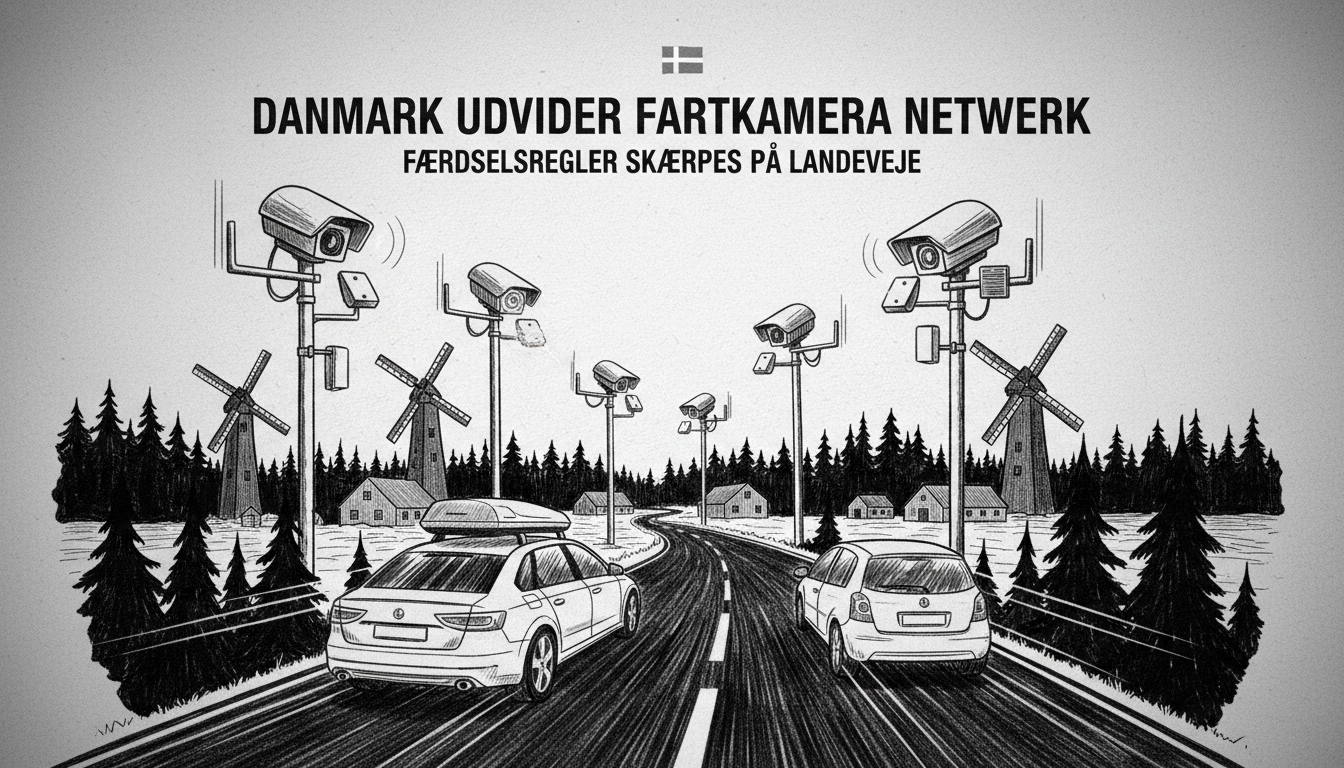Denmark will install 30 new speed cameras across its road network in a major traffic safety upgrade. The government has allocated 64.2 million Danish kroner to expand the automatic traffic control system known as ATK. This funding will also cover upgrades to 20 existing cameras and add ten additional units along five major highways.
The Transport Ministry expects to begin installing the 60 total camera units in the third quarter of 2027. The rollout will happen gradually across multiple locations. New cameras will appear between Bramming and Varde, Bramming and Ribe, Esbjerg and Grindsted, Nexø and Aakirkeby, and in Herning.
This expansion builds on Denmark's successful speed camera program that began in 2018. Authorities installed 20 cameras at 11 accident-prone locations where drivers consistently exceeded speed limits. After three years of operation, road authorities documented impressive results. Drivers reduced their average speed by 10 kilometers per hour in monitored areas. The most dramatic change came from drivers who previously traveled at dangerously high speeds.
The positive outcomes prompted former Transport Minister Benny Engelbrecht to announce plans for additional speed controls back in 2022. The current infrastructure agreement represents the fulfillment of that commitment. Denmark uses two main types of speed enforcement. Fixed cameras measure vehicle speed at single locations while section control calculates average speed over several kilometers.
Beyond traditional speed cameras, the infrastructure agreement includes 15.7 million kroner for noise monitoring cameras along highways. These specialized units can detect excessively loud vehicles, particularly in areas where noise pollution affects local residents.
Danish authorities clearly believe in the deterrent effect of automated enforcement. The substantial investment suggests they've calculated that preventing accidents and saving lives outweighs the system's costs. Some drivers might complain about increased surveillance, but the data shows these cameras effectively modify dangerous behavior.
The expansion reflects Denmark's systematic approach to road safety. Rather than temporary measures, the country invests in permanent infrastructure changes. This creates lasting safety improvements rather than short-term solutions. The gradual implementation allows for adjustments based on real-world performance and public feedback.
International readers should note that Denmark's traffic safety approach combines engineering, education and enforcement. The camera network represents just one component of a comprehensive strategy that has made Danish roads among Europe's safest. The country consistently ranks high in European road safety comparisons, and this latest investment aims to maintain that position.
What does this mean for drivers? Those traveling through Denmark should expect more consistent speed enforcement, particularly on rural roads and highways. The cameras don't distinguish between local and foreign drivers, so all motorists need to maintain legal speeds. The message is clear: slow down or pay up, whether you're a resident or visitor.

